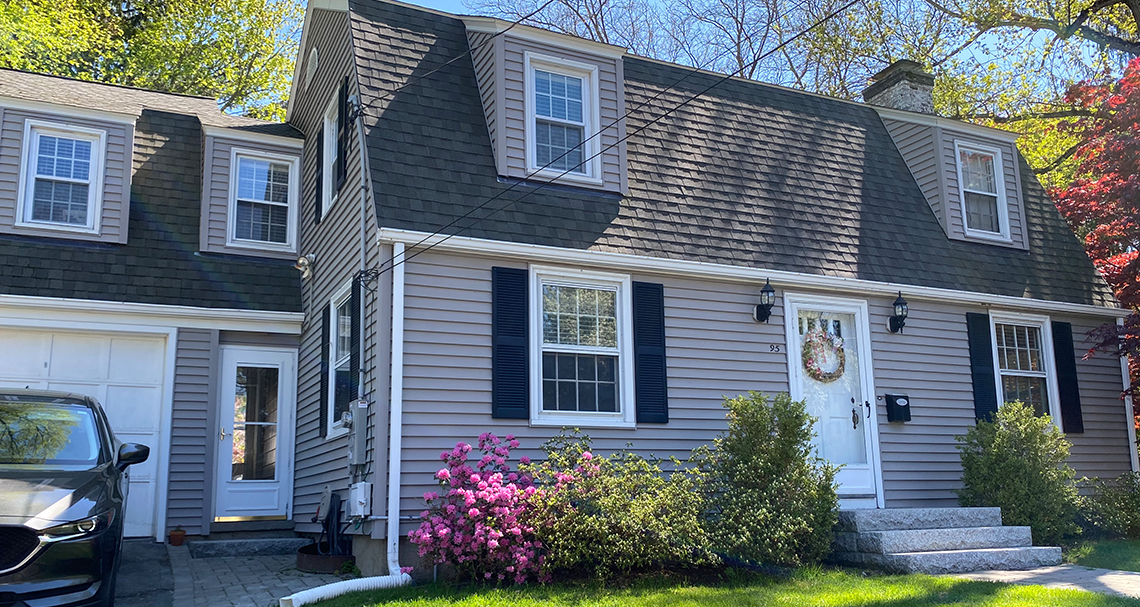The Important Overview to the Various Sorts Of Exterior Siding and Their Unique Advantages
In the realm of home enhancement, selecting the best house siding is a vital choice that influences both visual allure and useful performance. With so many options to think about, which siding material genuinely stands out for your specific task?
Timber House Siding
Wood exterior siding, a preferred choice for property outsides, offers a classic visual that integrates all-natural beauty with structural stability. This house siding product is readily available in various styles, consisting of clapboard, tiles, and board-and-batten, enabling house owners to customize their appearance to match their layout choices. Timber siding is commonly crafted from long lasting species such as cedar, redwood, or ache, which are known for their durability and ability to stand up to environmental stress factors.
Among the main benefits of timber siding is its outstanding insulation residential or commercial properties, which can add to power effectiveness and lower home heating expenses. In addition, timber home siding is biodegradable, making it an eco pleasant option when sourced sustainably. Normal upkeep, consisting of paint or discoloration, can extend its lifespan and boost its look, permitting house owners to protect the natural charm of the wood.
However, possible downsides include sensitivity to pests, rot, and climate damages, demanding ample therapy and maintenance - morris siding contractor. In spite of these issues, when effectively cared for, wood exterior siding can supply a gorgeous and durable remedy that boosts the personality of a home while using a warm, welcoming environment
Vinyl Siding
Vinyl house siding has emerged as a leading selection for home owners seeking a low-maintenance outside choice that incorporates durability and cost. This versatile material is crafted from polyvinyl chloride (PVC), making it resistant to numerous climate condition, consisting of dampness and UV rays. Therefore, vinyl exterior siding does not warp, rot, or discolor, ensuring long-lasting visual appeal.
Among the main advantages of plastic home siding is its comprehensive series of shades and designs, permitting homeowners to attain the desired search for their residential or commercial property without the need for regular repainting. In addition, vinyl siding is very easy to mount, which can significantly lower labor costs throughout building or improvement tasks.
Vinyl exterior siding likewise adds to energy effectiveness. Lots of alternatives attribute insulation backing, which improves thermal performance, aiding to maintain comfy interior temperature levels and possibly decreasing energy bills. Its smooth surface area promotes simple cleansing, calling for just regular washing with a garden tube to remove dirt and debris.
Fiber Concrete House Siding
Fiber cement house siding has actually gotten traction among home builders and house owners alike due to its impressive mix of sturdiness and aesthetic adaptability. Made up of a blend of sand, concrete, and cellulose fibers, this exterior siding option is crafted to endure extreme weather, consisting of high winds, heavy rainfall, and temperature level changes, making it a long-lasting option for property outsides.

One of the key advantages of fiber concrete house siding is its resistance to parasites, such as termites, and its non-combustible nature, offering enhanced fire security. morris siding contractor. Additionally, it is available in a broad selection of styles, colors, and structures, enabling house owners to achieve their desired visual without compromising performance
One more advantage is its reduced upkeep demands; fiber cement exterior siding usually calls for paint or staining every 5-10 years, which is less constant than various other materials. Additionally, its longevity contributes to a lower overall cost of ownership, as it reduces the requirement for constant repairs or replacements.
Eventually, fiber concrete house siding represents an excellent financial investment for those seeking a resilient, attractive, and flexible exterior alternative, incorporating both kind and function to improve the home's curb appeal.
Metal House Siding
The appeal of metal home siding hinges on its durable resilience and contemporary aesthetic allure, making it a popular choice for contemporary architecture. Offered in products such as light weight aluminum and steel, metal exterior siding offers a variety of colors and finishes, enabling house owners to achieve a tailored appearance that enhances their layout vision.

Power effectiveness is one more significant benefit, as numerous steel exterior siding items are created with insulation alternatives that assist control interior temperatures. This can lead to minimized power prices in time. In addition, metal siding is frequently recyclable, making it an ecologically pleasant option for sustainability-minded property owners.
The installation process for metal home siding can be reasonably uncomplicated, leading to a quicker turn-around time for building tasks. On the whole, metal home siding integrates functionality and style, making it a useful alternative for those seeking a enduring and visually appealing exterior surface.
Brick and Rock Exterior Siding
Block and rock siding stands out as an ageless selection that improves the aesthetic appeal of any home. Recognized for their resilience and low upkeep, these materials offer an extraordinary roi while boosting the home's curb charm. Available in different colors, appearances, and patterns, block and stone can be tailored to suit diverse building styles, from standard to contemporary.
One of the key advantages of block and rock house siding is their energy effectiveness. Both products possess all-natural protecting residential or commercial properties that aid control interior temperatures, potentially reducing cooling and heating prices. Furthermore, they supply premium fire This Site resistance contrasted to various other siding choices, adding to improved safety and security.
Another benefit is their long life. Block and stone can last for decades, frequently needing very little maintenance past periodic cleansing. Unlike timber home siding, they are unsusceptible parasites and rot, ensuring a long-lasting exterior that withstands the elements.
Conclusion
In recap, the selection of siding considerably affects a home's aesthetic appeal, energy efficiency, and upkeep needs. Each kind of home siding-- whether timber, vinyl, fiber metal, brick, or weblink concrete and stone-- provides unique advantages customized to different house owner preferences and ecological problems. Comprehending these options enables notified decisions that enhance both the sturdiness and visual charm of household outsides. Eventually, choosing the appropriate home siding is vital for achieving an equilibrium between functionality and layout in property architecture.
One of the primary advantages of wood siding is its exceptional insulation buildings, which can contribute to power efficiency and lower home heating costs. Furthermore, wood home siding is biodegradable, making it an ecologically pleasant option when sourced sustainably.One of the primary advantages of metal exterior siding is its resistance to numerous ecological variables.Energy efficiency is an additional substantial benefit, as lots of metal home siding products are designed with insulation alternatives that help manage interior temperature levels. Each type of house siding-- whether wood, vinyl, fiber brick, metal, or concrete and stone-- provides unique benefits customized to various learn the facts here now house owner preferences and ecological problems.
 Amanda Bynes Then & Now!
Amanda Bynes Then & Now! Barret Oliver Then & Now!
Barret Oliver Then & Now! Lark Voorhies Then & Now!
Lark Voorhies Then & Now! Molly Ringwald Then & Now!
Molly Ringwald Then & Now! Christy Canyon Then & Now!
Christy Canyon Then & Now!